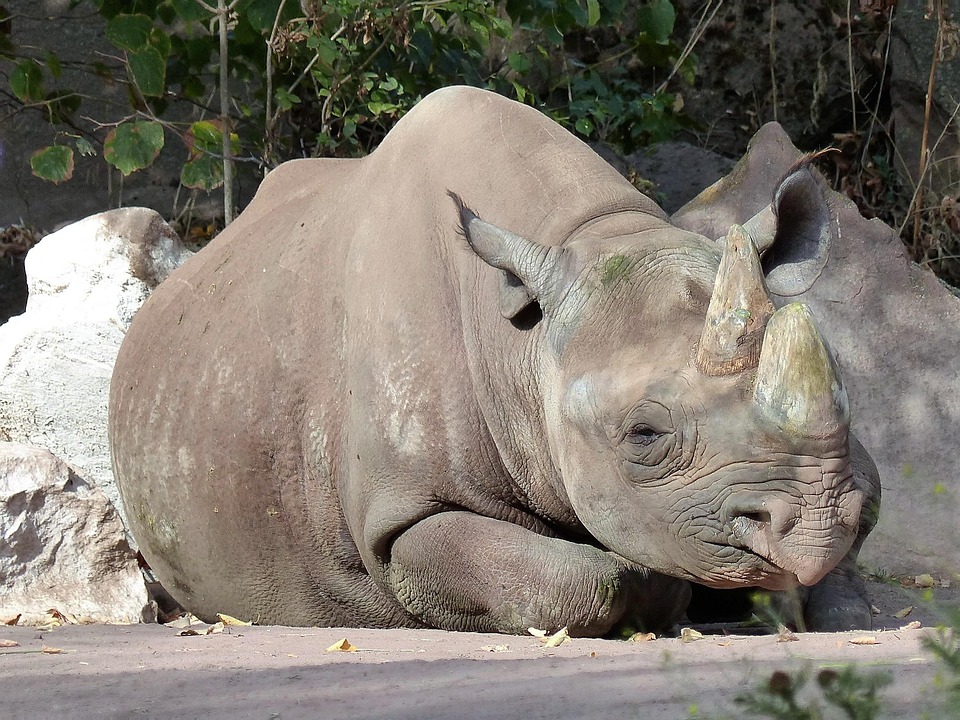JOURNEY FROM EXISTENCE TO EXTINCTION
Episode 3
The Legend of Black Rhinos

Black Rhinos, or "living fossils" as scientists call them, have existed on Earth's surface for the longest time. Native to Eastern and Southern Africa, Black Rhinos are usually found feeding in grasslands or flood plains and are hence categorized as browsing animals. These massive creatures can swim, run, and dodge obstacles despite their large size. Unlike other animals, Black Rhinos mark their territory using dung.
Playing the role of megaherbivores, the Black Rhinos help shape the structure of grasslands through their feeding habits, which provide food for other grazing animals like zebras and elephants as their excretion recycles nutrients back into the ecosystem. Furthermore, the selective eating habits of the Rhinos help the plant biodiversity and make them possessive of their territory, hence they protect the area and other animals sharing the space from several threats like hunters.
However, the world may soon be deprived of the beauty and aid of our dear Black Rhinos as their lives have taken a 180-degree flip because of us humans.
Labelled as “critically endangered” by the International Union for Conservation of Nature and Natural Resources (IUCN), the Black Rhinos are on the brink of extinction with a population of approximately 6,500 left.
Poaching (illegal hunting of animals) has been a major contributor to the decline of the Rhino population. Driven by consumer demand for Rhino horns primarily in Asia, most of these find their way into the illegal markets of Vietnam. Here, criminals grind up the horns and sell them to the pharmaceutical industry for traditional medicine. The markets of China are another area where the horns of Black Rhinos gain the spotlight and are sold as antiques and luxury art pieces. The Black Rhinos are found in politically unstable and war-prone areas, which makes it easier for poachers to carry out their plans as well.
Additionally, habitat loss has also widely affected the population of these wild creatures. The composition of grasslands has been changed due to logging and agriculture so that human needs can be fulfilled, which has resulted in the Rhinos being confined in fragmented areas of their habitat; this has led to the lack of survival resources which continuously hinders both their survival and breeding. Experts fear that constant fragmentation and extra pressure would lead to an encounter between the Black Rhinos and humans which will be fatal for humankind.
The breeding system of Rhinos has changed due to the new living conditions. The drastic decrease in the Black Rhino population has led to many of them living and dying in isolation. Some Black Rhinos live in small groups due to habitat fragmentation; therefore, chances of mating are reduced. In situations where the Black Rhinos do mate, the diversity reduces, and the lives of the Black Rhinos get threatened by the environmental changes. Diseases also aid in the decrease of the population of Black Rhinos, boosted by climate change and habitat loss. To illustrate, Iron overload disorder (IOD) is one of the diseases that lead to diet change and reproductive depression.
As the world recognizes the importance of Black Rhinos, several measures have been taken to preserve them.
The World Wildlife Fund (WWF) initiated work to protect the Black Rhinos in Namibia, Kenya, and South Africa and has taken measures alongside the governments, such as translocating Rhinos; this refers to moving them from parks with significant populations to other areas. WWF also works with the rangers of South Africa to restrict poaching while training and developing new technologies that would enable law enforcement and prevent wildlife trafficking. Other measures taken by WWF include expanding and setting up new protected areas and also encouraging ecotourism to educate the masses regarding our Living Fossils.
The European Association of Zoos and Aquaria (EAZA) has also introduced special programs to breed Black Rhinos under supervision. These breeding programmes aim to conserve healthy populations of Black Rhinos in captivity while safeguarding the genetic health of the animals.
Fortunately, a slight rise is seen in the population of Black Rhinos due to the efforts of various organizations. This proves that when an effort is made, the extinction of special animal species can be avoided.
Similar Post You May Like
-

CFCs, HFCs and their long, troubled history
At its peak, the ozone hole covered an area 7 times larger than the size of Europe, around 29.9 million km2, and was rapidly expanding
-

The Origin of Universe: Deciding point where it all began!
Let us unravel and surf through the ideas throughout ages to understand what the universe and its origin itself was to its inhabitants across history.
-

The Artemis Program
Inspired by the Greek goddess of the Moon, twin sister to Apollo, the artimis program was named on 14 May 2019 by Jim Bridenstine.







